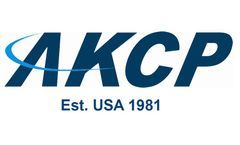Backup Power Generation Articles & Analysis
8 articles found
The global health crisis brought by COVID-19 is another challenge that emphasized the importance of the pharmaceutical industry. Companies in this field promptly responded by commencing research for vaccines and a cure for the disease, all while continuing to provide existing vaccines and drugs to consumers all over the globe. This undertaking required electrical infrastructure that can support ...
To remain online data centers rely on primary and backup power sources. Demand for telecommunications and computing power has given an oppourtunity for fuel cells. ...
ByAKCP
A UPS is however just a short term backup power. It provides sufficient power during the transition between mainline power and generators. ...
ByAKCP
Types of generators and maintenance requirements There are two categories of generator power installations. Emergency Power Supply Systems (EPPS) are an independent power supply system for life-critical infrastructure. For example, hospitals are legally required to have EPPS. The maintenance of such systems is tightly controlled and regulated. The second category is standby generators. These ...
ByAKCP
Value Fuel-powered generators are generally priced from $500 to $6,000, depending on size. ...
Diesel Generators – the Old Standby The traditional approach to ensuring backup power supply when the grid fails has for many years been the standby diesel generator. ...
Project Summary End User: Power Generating Station in Southwest US Lighting Agent: R.C. Lurie Company (Lighting Design) Project Scope: Independently powered (solar) lighting systems for perimeter fencing surrounding a power generating station located in the Southwest US Product: Carmanah EverGEN 1530 solar ...
On March 3, 2010, U.S. EPA promulgated final National Emissions Standards for Hazardous Air Pollutants (NESHAP) for existing compression ignition (CI) stationary Reciprocating Internal Combustion Engines (RICE) that were not previously regulated by the existing, so called, RICE MACT (i.e., 40 CFR Part 63, Subpart ZZZZ). The RICE MACT rule was originally promulgated in 2004. The March 3, 2010 ...






